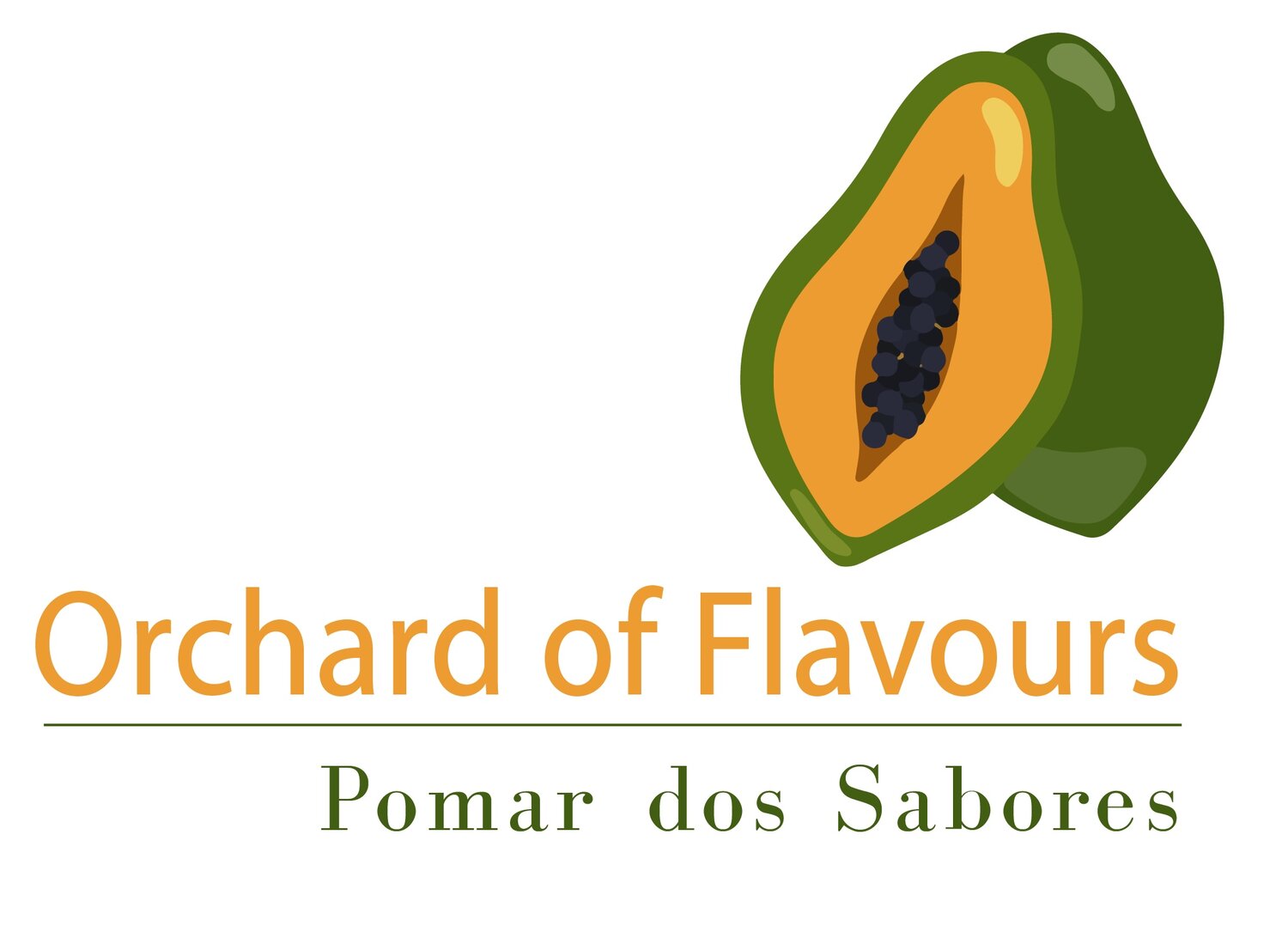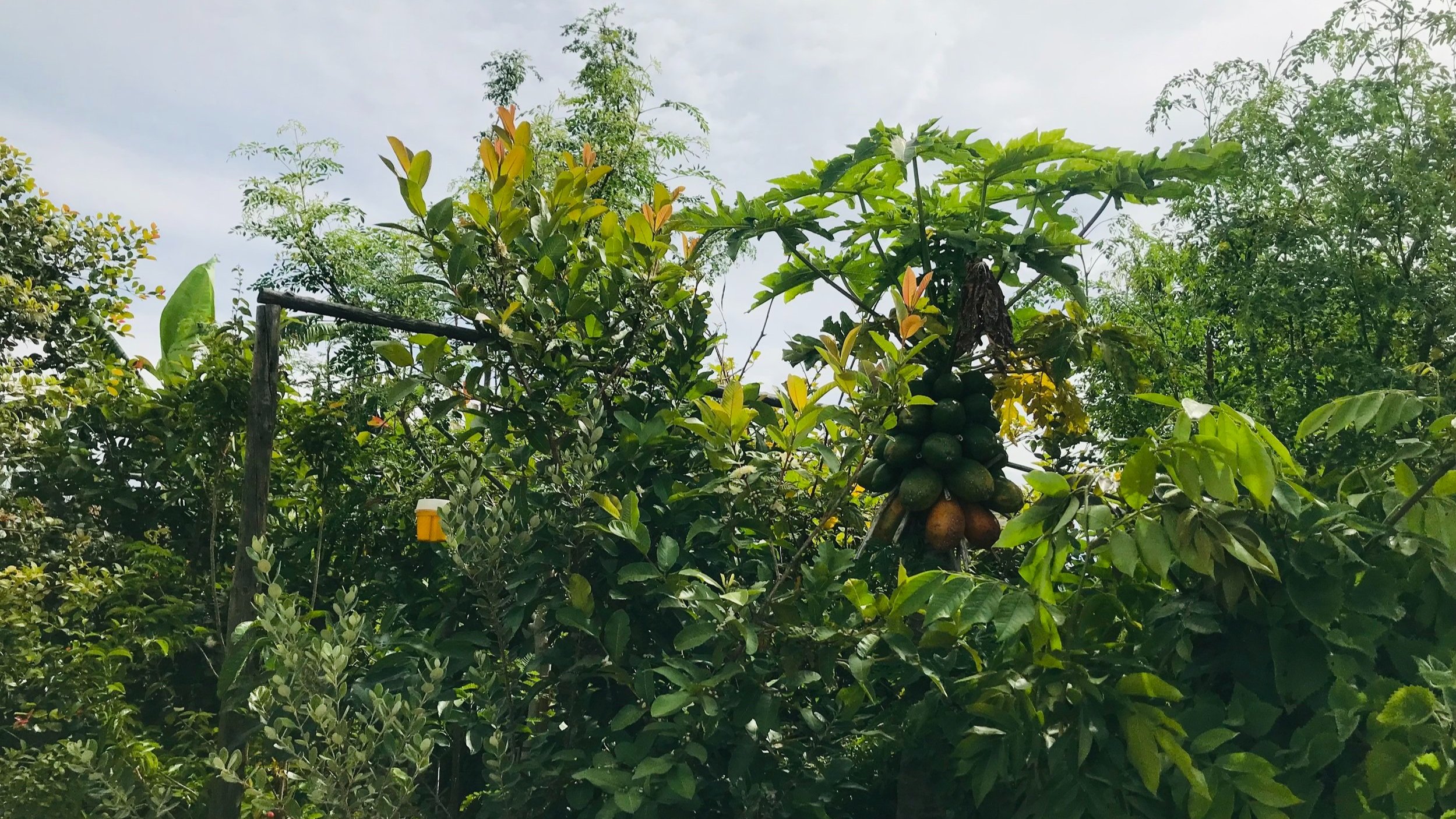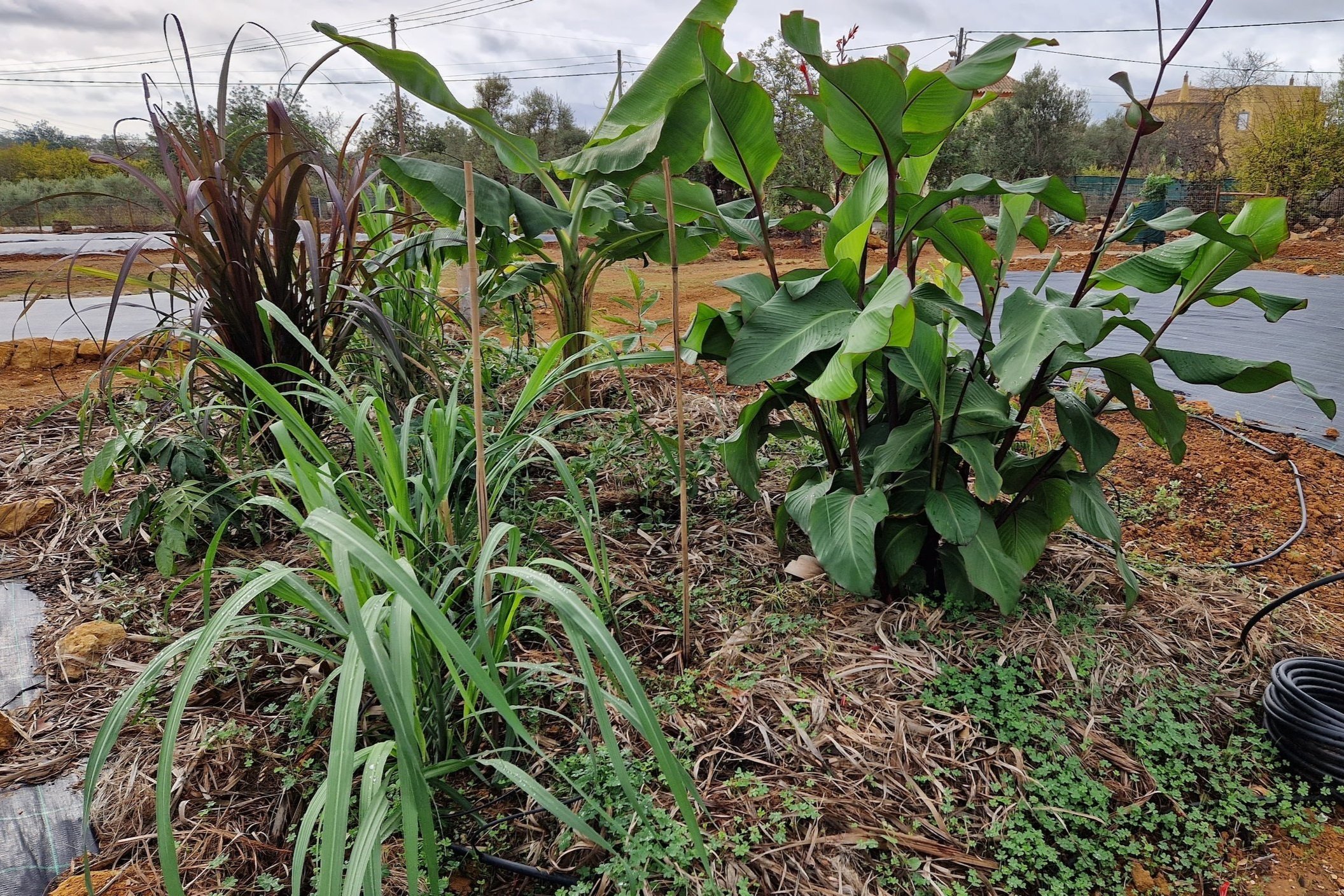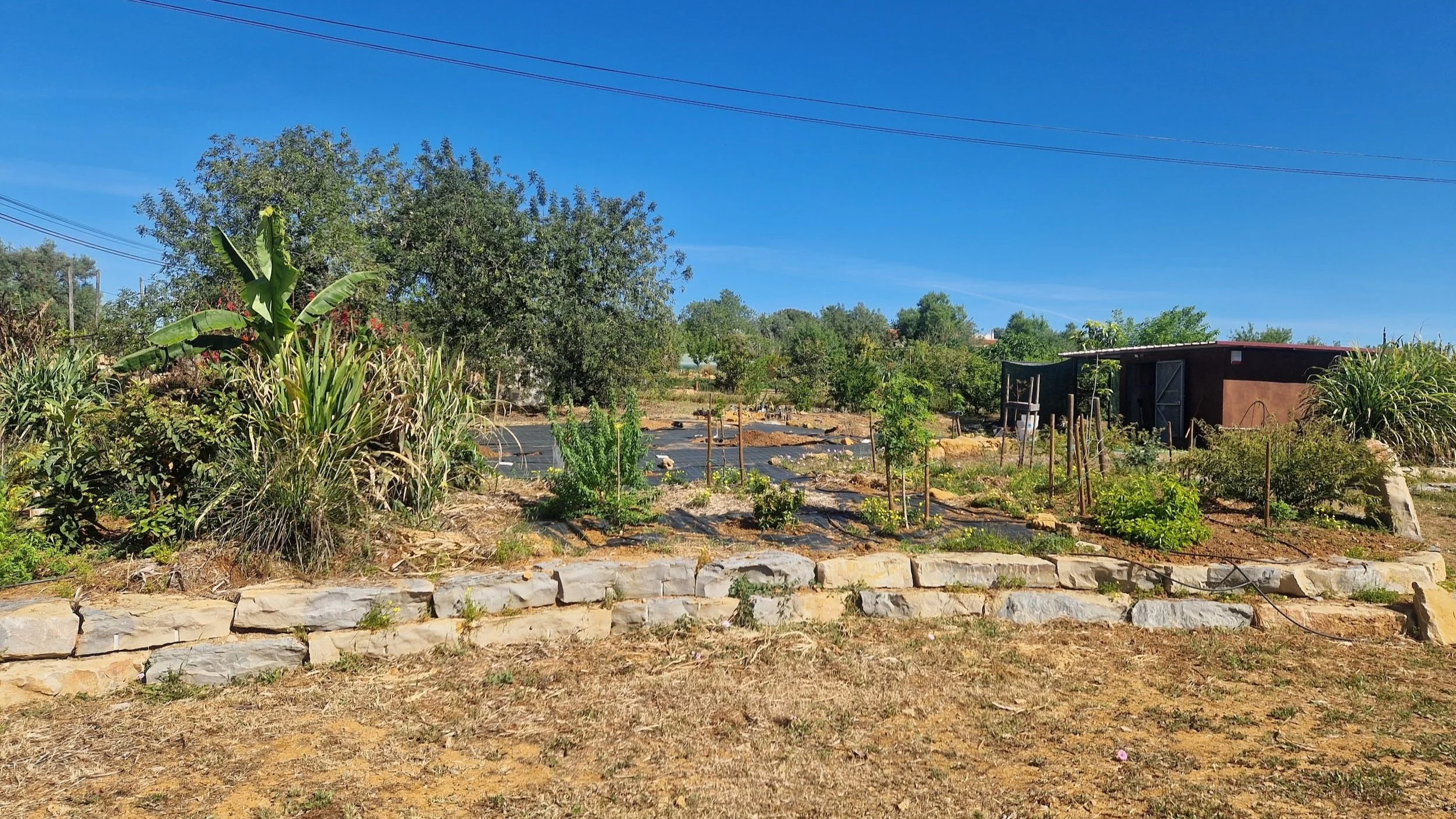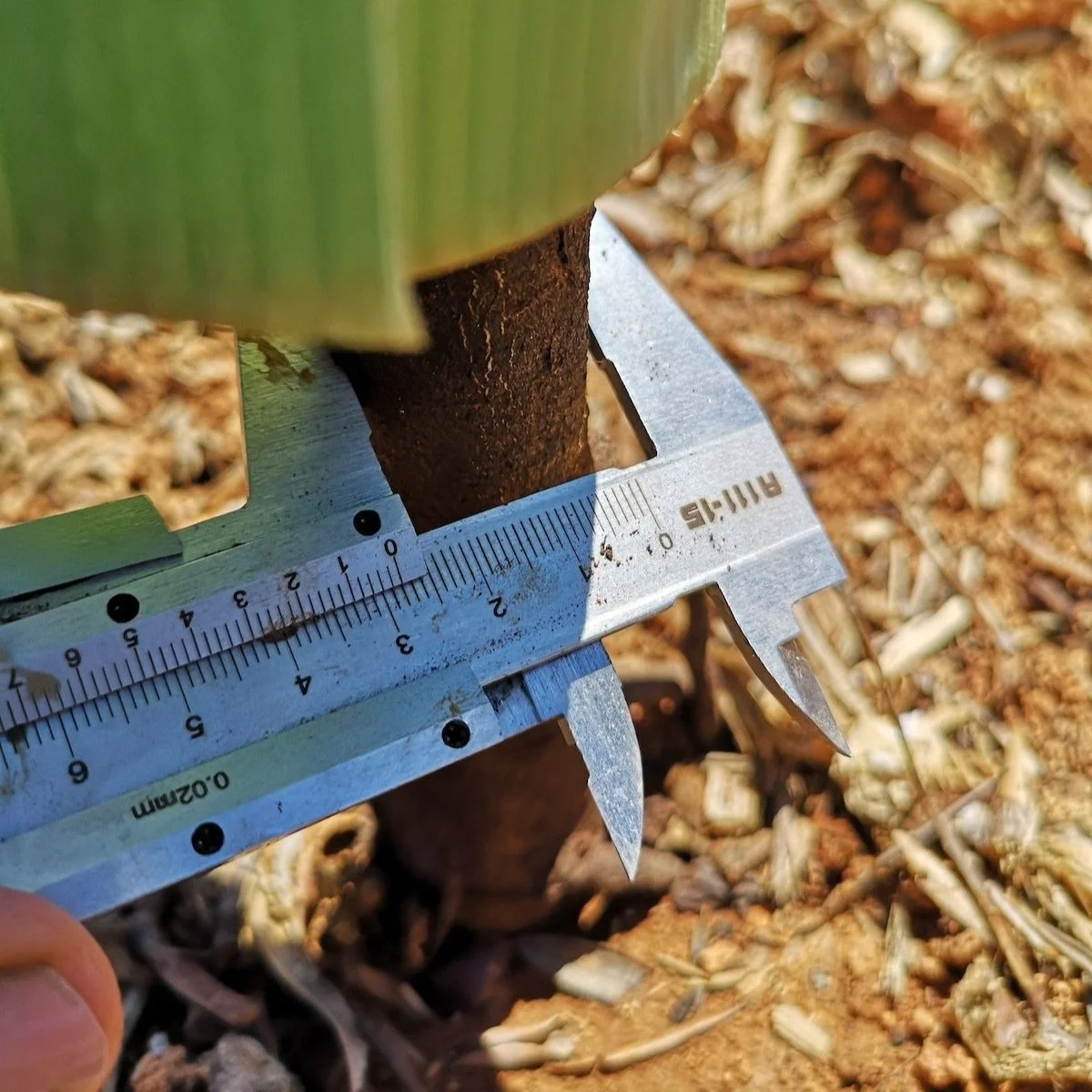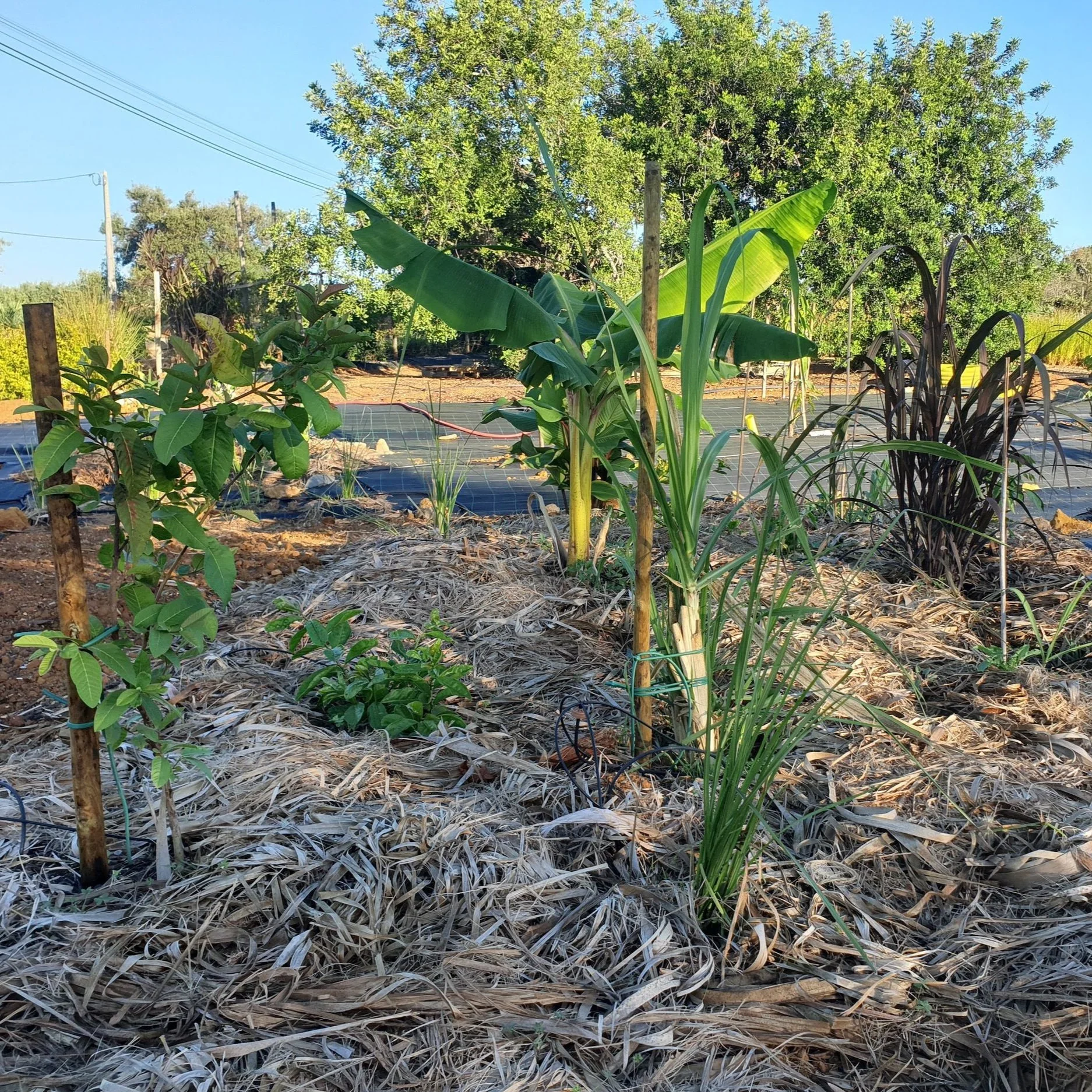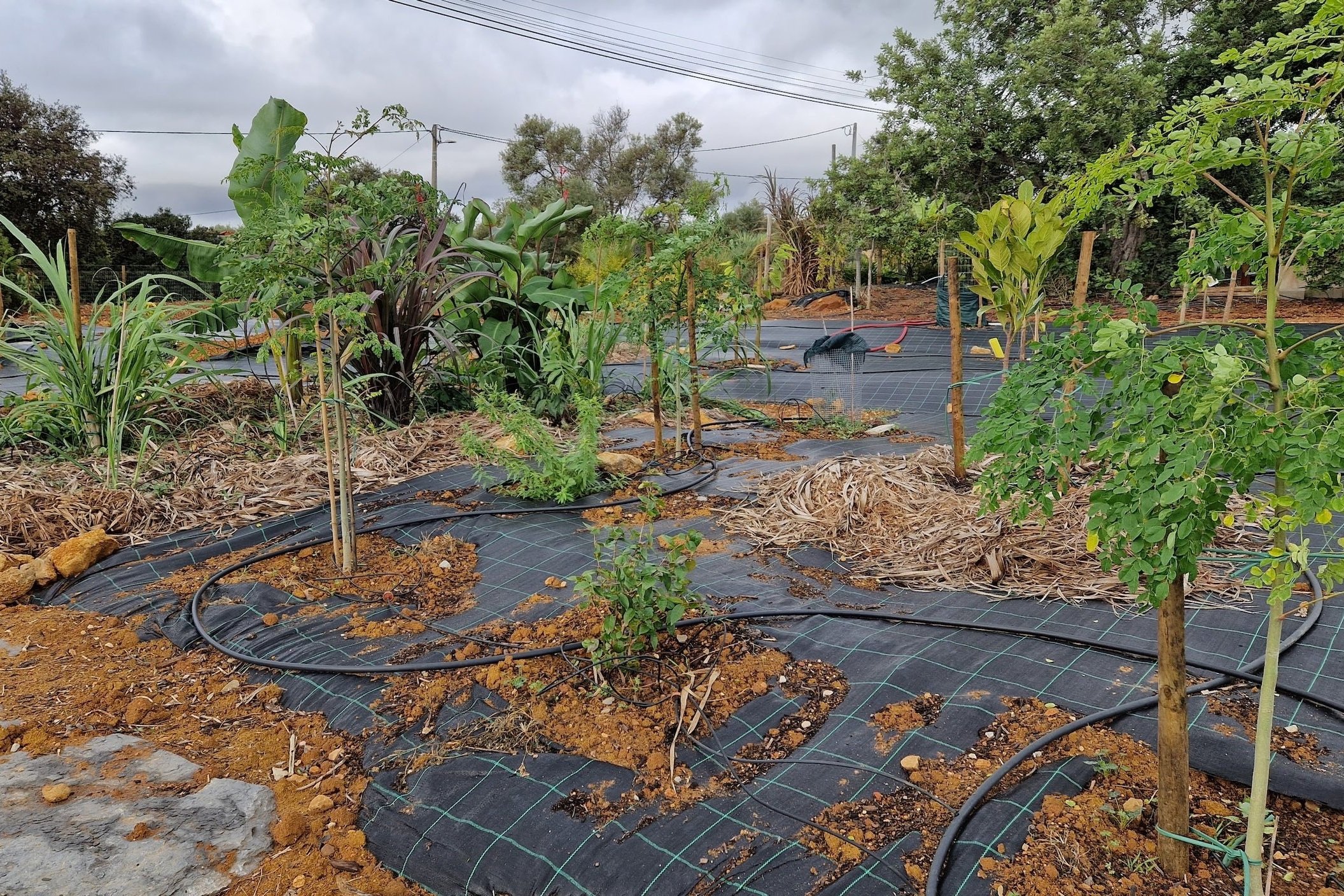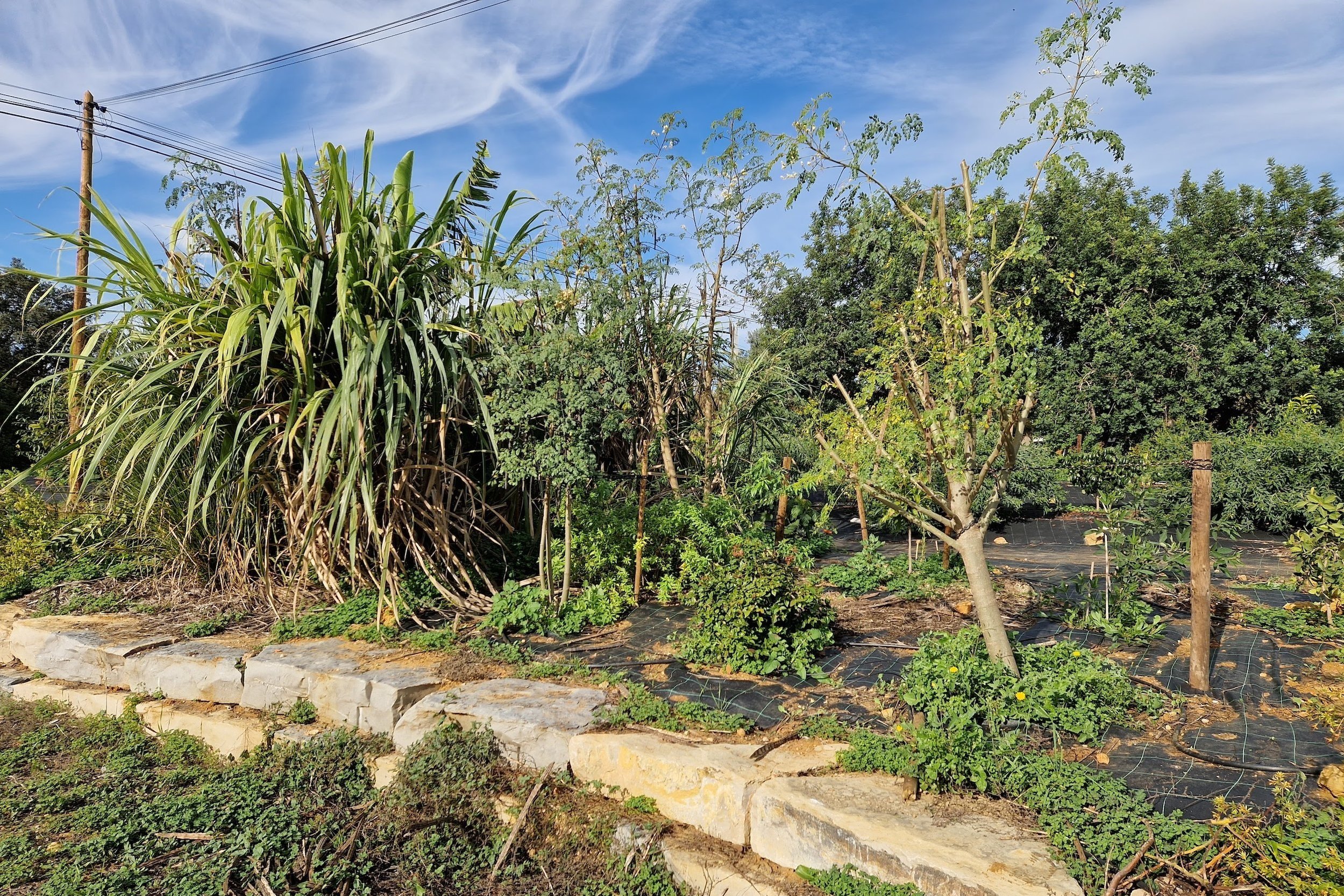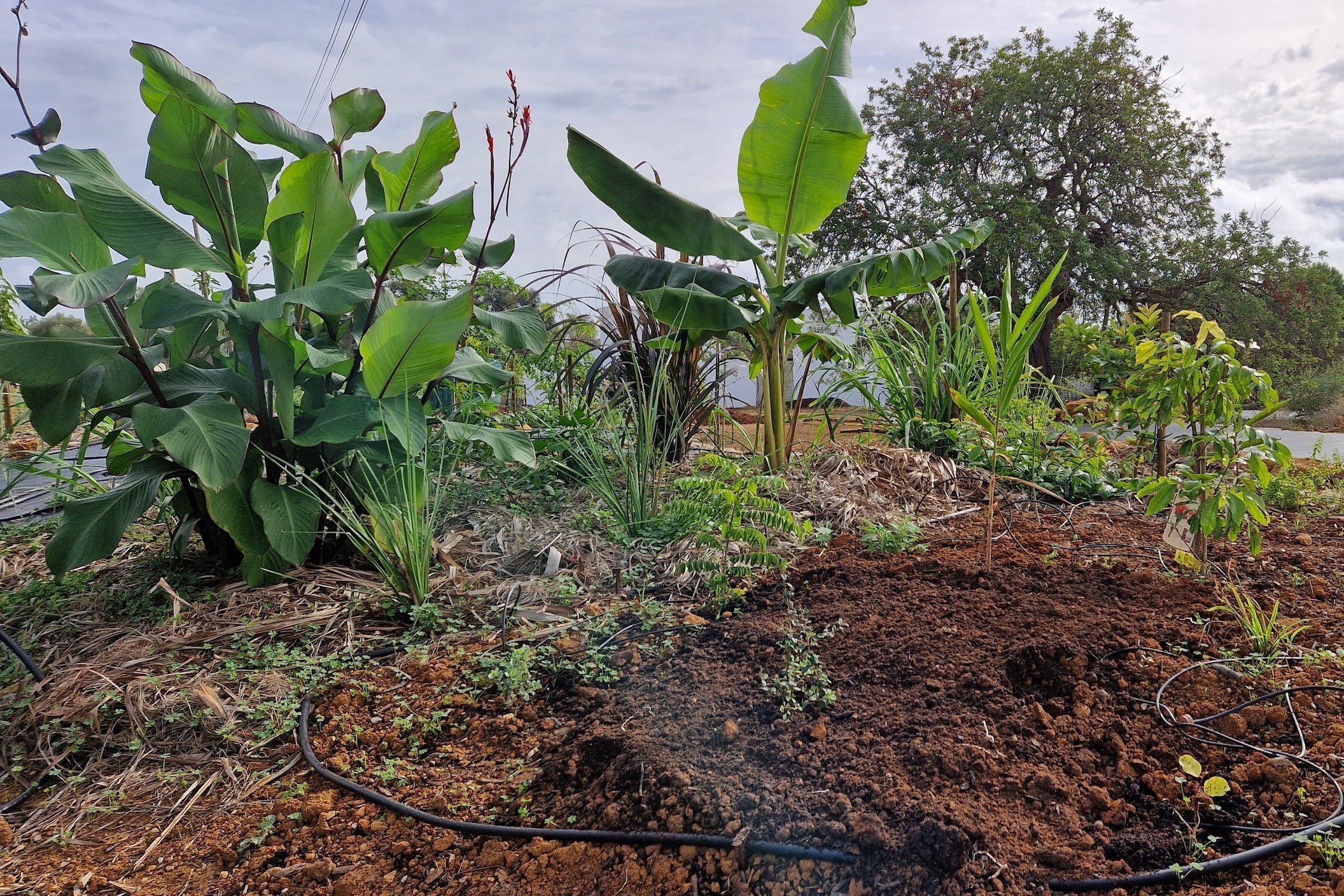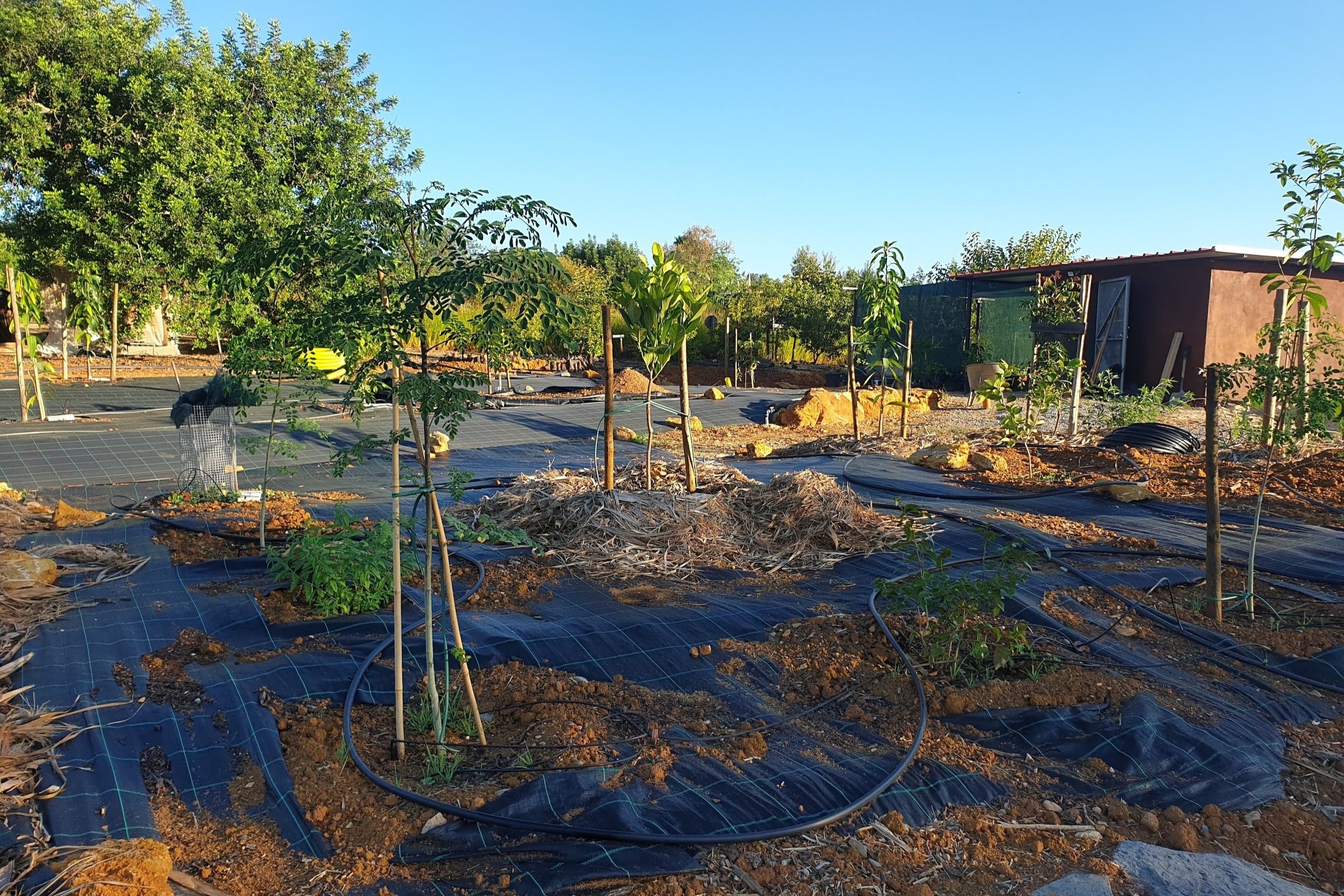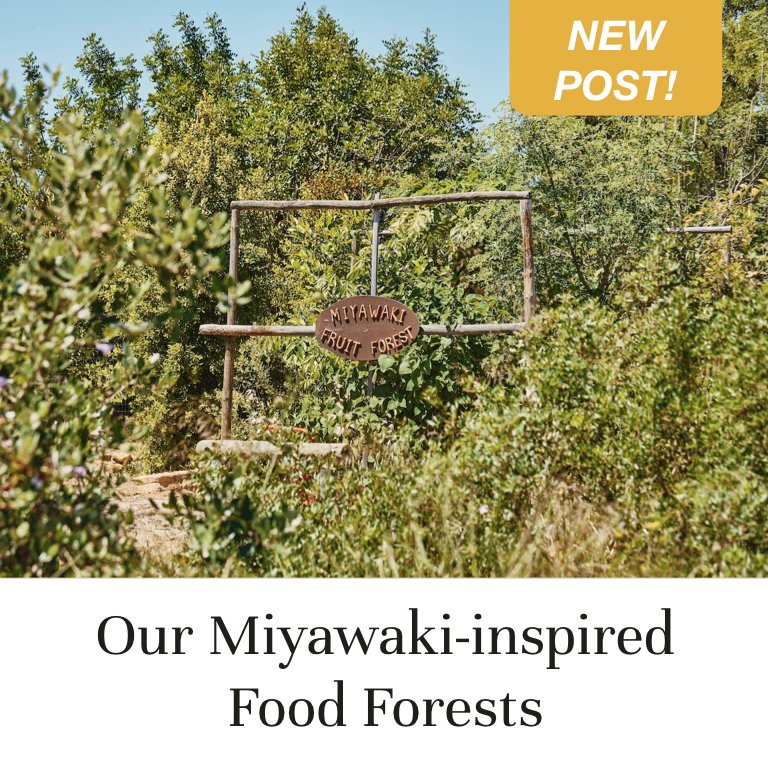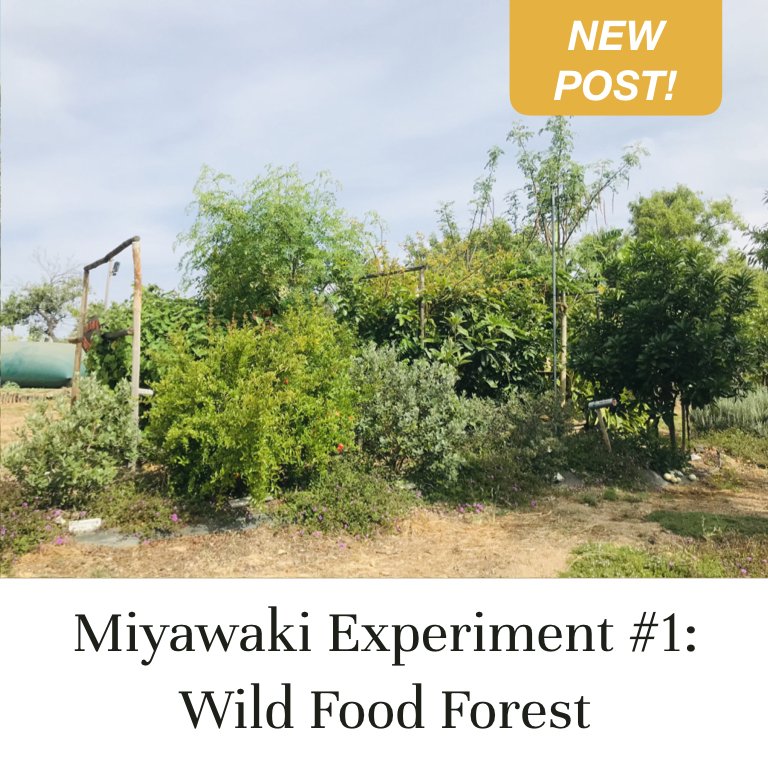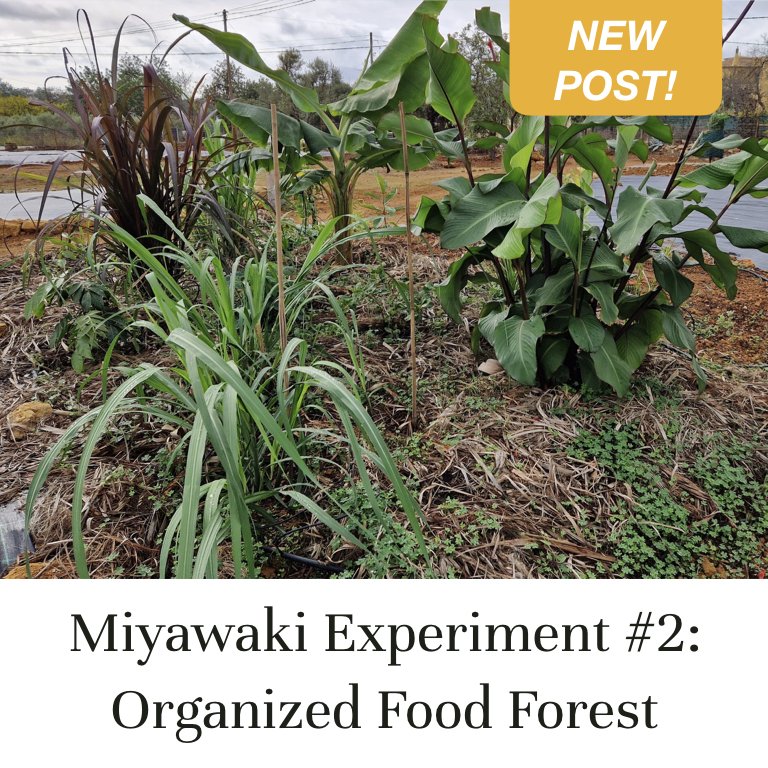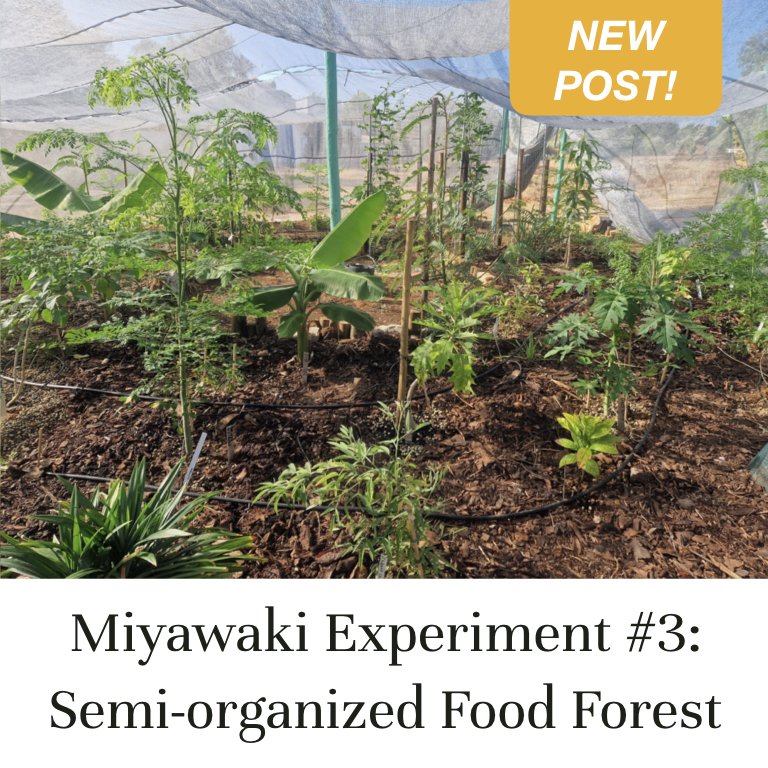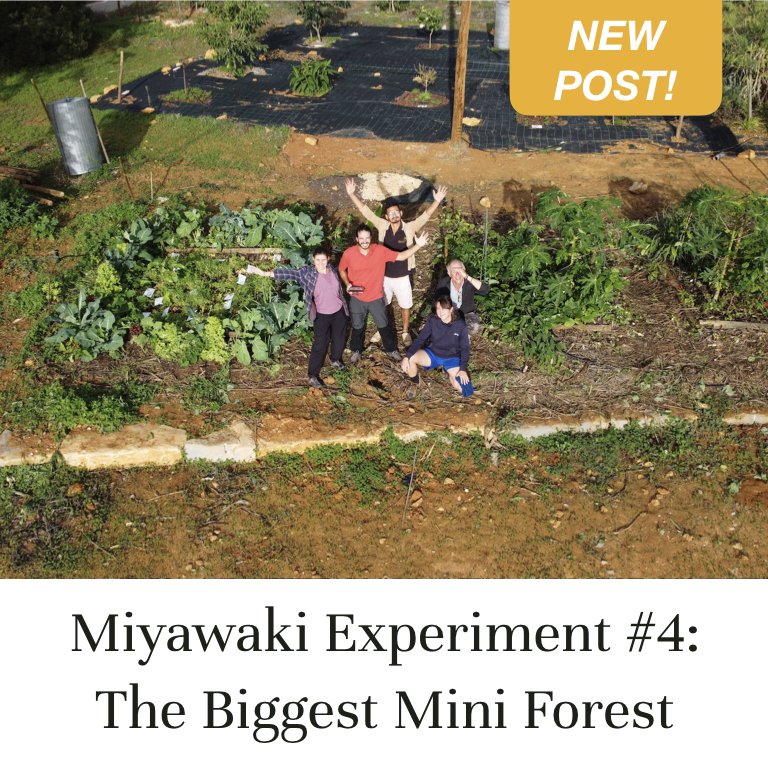Miyawaki Experiment #2 — Organized Food Forest
The most docile and tidy version of Food Forest. It includes a Mini Edible Jungle and an area of orchard, where Treasure Trees (long-term crop) are nursed by Hero Trees (providers of biomass and protection).
jump to —> Experiment specifics — Expected results — Data Monitored — SPECIES LIST — Other Experiments
The benefits of a Food Forest
All our Miyawaki-inspired Food Forest experiments are focused on growing fruit trees and other edible plants, while strongly contributing to improve their surrounding environment.
They offer a number of advantages over traditional gardens, including high productivity, low maintenance, water conservation, soil erosion reduction, wildlife habitat provision and resilience against drought or powerful winds. In addition, Food Forests can be educational and aesthetically pleasing.
Putting the Miyawaki method to practice
We’re doing this by mimicking a natural forest environment:
Enriching the existing soil 🪱🍄
Designing a multi-layered forest 🌳🌿
Planting very densely and at the same time 🌱🌱🌱
Caring for and protecting all the baby trees 💧🪺
Mini Edible Jungle in our 3-month old Organized Food Forest, October 2022
To find out more details about this way of creating dense, fast-growing forests, check out the main article. There, we also describe how we’re applying its principles across the different experiments at the Orchard of Flavours site!
Food Forest Experiment #2 - Organized
The specifics:
Planting date: July 2022
Area: 160m² = Mini Edible Jungle (30m²) + Orchard (130m²)
Number of species: 45
Total of plants: 120 = Mini Edible Jungle (90) + Orchard (30)
Planting density:
Mini Edible Jungle: 3 trees/m²
Orchard: 1 tree/4m²
A small Miyawaki-inspired ‘Mini Edible Jungle’ was planted on the west side, to act as a windbreak and to create a fast-growing green patch of biodiversity.
In the other section — the ‘Orchard’ side — the trees we want to keep in the long-term for their crop (which we call ‘Treasure Trees’) were all planted at a minimum distance of 2 to 3 meters from each other.
Amongst those Treasure Trees we planted ‘Hero Trees’, that is, edible plants which grow fast and will not live too long, or can be pruned severely for their biomass, which is dropped to mulch and build soil (mostly the nitrogen-fixing Cajanus cajan — pigeon pea — and also Moringa oleifera). They also provide protection to our more valuable trees in the first years. We were inspired to use Hero Trees by the Syntropic Farming approach.
For more detailed information on the process we followed when planting Experiment #2, you can read our Food Forest Protocol learn article
Miyawaki-inspired Organized Food Forest at 9 months old, April 2023. The Mini Edible Jungle is visible to the left (west), with the much less dense Orchard section to the east
The expected results:
Fast and healthy growth
High productivity
Ease of harvest
Data monitored:
Plant height
Trunk diameter at 20% of the total height
Food production
Average water usage
Plant survival rate
Pests & diseases
Measuring a tree trunk diameter at 20% height
The Organized Food Forest’s Mini Edible Jungle, 2 months after planting
Make sure to check out our main article on Miyawaki-inspired Food Forests, where we explain the whole concept and how we’re putting it in action at the Orchard of Flavours site. Also, don’t forget to compare this Experiment #2 with all the others already growing:
Species in this Food Forest
Acca sellowiana — feijoa
Aloysia citrodora — lemon verbena
Annona x atemoya “Red Israel” — custard apple
Atriplex halimus — salt bush
Azadirachta indica — neem tree
Bixa orellana — achiote
Bulbine frutescens — bulbine
Cajanus cajan — pigeon pea
Canna edulis — achira
Capparis spinosa “Inermis” — thornless caper
Chrysopogon zizanioides — vetiver
Cnidoscolus aconitifolius — chaya
Cymbopogon citratus — lemongrass
Dimocarpus longan “Chompoo” — longan
Diospyros digyna — black sapote
Eriobotrya japonica — loquat
Eugenia brasiliensis — Brazilian cherry
Eugenia pitanga — pitanga do Cerrado
Eugenia uniflora — Surinam cherry
Hemerocallis “Sammy Russels” — daylily
Hovenia dulcis — Japanese raisin tree
Inga edulis — ice-cream bean
Litchi sinensis — lychee
Mangifera indica “Ataulfo” — mango
Mangifera indica “Maya” — mango
Moringa oleifera — moringa
Musa “Chini Champa” — banana
Pereskia aculeata — ora-pro-nobis
Pouteria campechiana — canistel
Pouteria viridis — green sapote
Psidium cattleianum — strawberry guava
Psidium guajava — guava
Saccharum officinarum “Ko honua ula” — black sugarcane
Saccharum officinarum — sugarcane
Salvia officinalis — common sage
Solanum betaceum — tree tomato
This article was compiled by Miguel COTTON & Miguel PEREIRA. If you have any questions or suggestions, do not hesitate to contact us. Please write us anytime at miguel@orchardofflavours.com.
